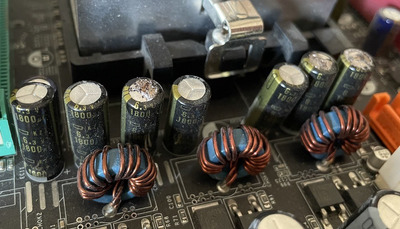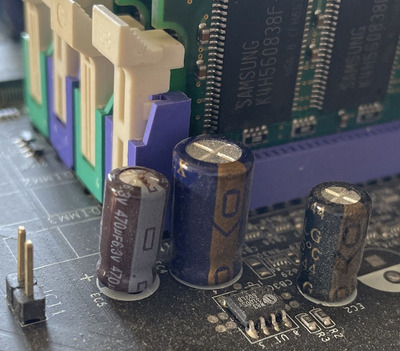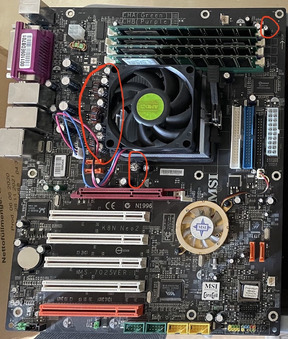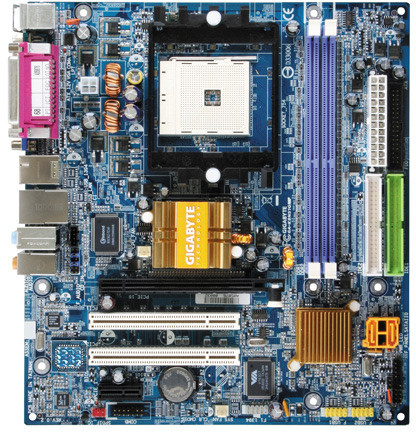First post, by thp
I have a K8N Neo2 (from 2004 ish?) board here that still POSTs, but has visible problems with the capacitors, so I assume I should replace those soon to avoid frying the board and/or CPU?
The capacitors near the CPU are labeled as 1800 uF, 6.3 V - it seems like there are 7 of them and 3 show signs of corrosion/leakage(?).
There's another capacitor at the corner of the board (near the RAM sticks) that's labeled as 470 uF, 6.3 V (EC5 printed on the board).
Since I haven't done any capacitor replacement (but read up a bit about it on the 'net), specific questions for this case of some obviously failing capacitors:
- Are those capacitors near the CPU part of the Voltage Regulator Module (VRM)? Does that mean they affect how stable/clean the power to the CPU is?
- When replacing those, should I just buy any "1800 uF 6.3 V" (+ 470 uF for the other one) capacitors I can find, or are there other specs that matter?
- Should I replace just the 3 "broken" ones or all 7, or all similar-specced ones or even ALL caps in that area? Could mismatched (same uF and V value, but different make/model/form factor/age) capacitors lead to problems down the line?
- Why/how does the board still POST? Are those non-essential/redundant, or are they failing gradually or do they only come into use with certain CPU voltages (say)? Or would these show up as stability issues under load / under high temperatures?
- Is it possible (and/or useful) to "measure" with a multimeter if the still-good-looking capacitors are failing? Can I measure them while still being soldered into the board, or do I have to desolder, then measure, then either replace or re-solder?
Photos attached of the current state of the board.





